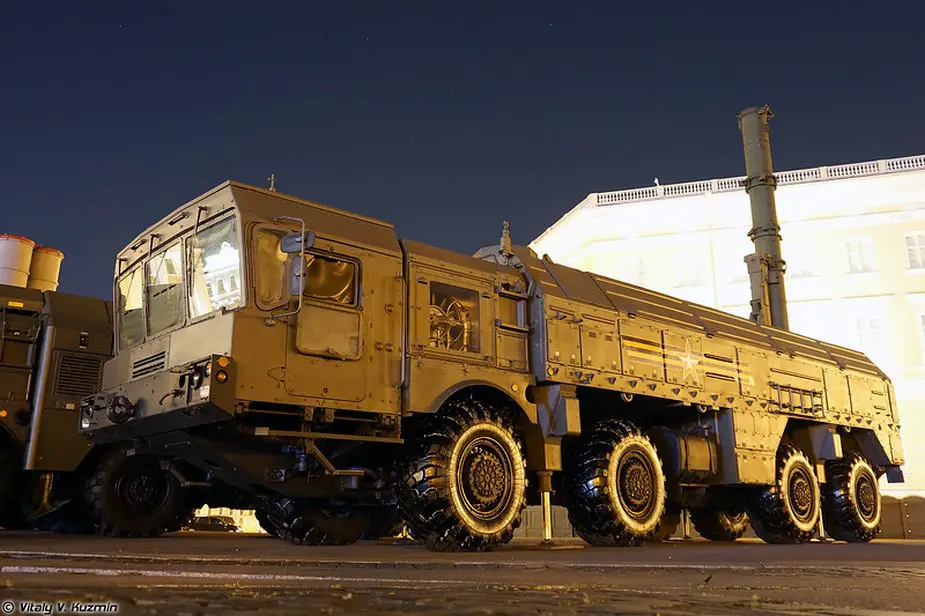Russian intermediate missile designers to resolve several problems
The Russian defense industry is facing two tasks because of the US withdrawal from the Intermediate-Range Nuclear Force (INF) Treaty and subsequent Russian suspension of it. It has to create ground-based Kalibr cruise missiles with a range of up to 2,500 km and a hypersonic intermediate ballistic missile. The Izvestia writes how complicated the projects are and whether they can be fulfilled on time.

9P78-1 TEL for Iskander-M system (Picture source: Vitaly Kuzmin)
It is not a difficult task to base seaborne Kalibr on the ground. 3M-14 Kalibr and Iskander-M cruise missiles were designed by Novator Bureau which likely used the same technical solutions in seaborne and ground-based missiles. The missile design, engines, controls, warheads and pre-launch aiming are likely the same.
It would be strange for one design bureau to ignore its own experience in the creation of similar missiles. It therefore simplifies the creation of ground-based Kalibr. The question is the launcher and increased or adjusted batch production of the missiles to keep the output for the Navy. Radical decisions are also possible up to a revision of the program to build warships that carry long-range cruise missiles. Ground-based Kalibr is anyway a more mobile and hidden means of a missile strike.
The size of 3M-14 cruise missile does not fit Iskander-M self-propelled launcher. However, the new launcher for 9M729 missile, which was displayed by the Defense Ministry on January 23, is fit for 3M-14. It means the issue of ground-based missiles can be resolved quickly in several months. The deployment of such missiles may begin right after the flight trials. The Russian armed forces may get a major intermediate ground-based firepower in late 2019.
There is little information on the second item - hypersonic ballistic intermediate missile. If any work was done, it was purely theoretical and no details are known. The new missile is likely to be created either by the Machine-building Design Bureau in Kolomna or the Moscow Heat Technology Institute (MIT).
The missile is likely to have a powerful first stage with a minimal active flight section and an air ballistic second stage controlled during the whole flight. It is therefore not a classical ballistic missile with a free-falling warhead, but something more sophisticated. The missile will fly along a trajectory which is difficult to calculate for adversary air and missile defense.
The creation of such a missile is a major challenge despite the available rich theoretical experience. It has to be developed from scratch and several problems have to be resolved. Firstly, it is necessary to create the missile itself, its engines, hull, controls, aiming and adjustment systems. Secondly, it is necessary to design the launcher. The missile is unlikely to fit available launchers. Iskander is small while Topol-M and Yars multi-axis vehicles are too big.
There are intermediate options, e.g. the launcher of Nudol anti-satellite system. It can likely carry two new missiles.
Besides the launcher, it is necessary to create auxiliary systems: target information vehicle, command-staff vehicle, personnel vehicle, transloader, missile maintenance tools. Some available solutions will be definitely used, but it all has to be built, tested and introduced.
The troops may have to create a new command-staff infrastructure for new missiles. The new brigades may be likely subordinated to the Strategic Missile Forces. It is logical as they will be engaged not to support the ground forces, but for strategic purposes.
How much time the creation of such a hypersonic missile will take? The two years announced by the military look insufficient. It is a complicated but implementable task, the Izvestia said.


























